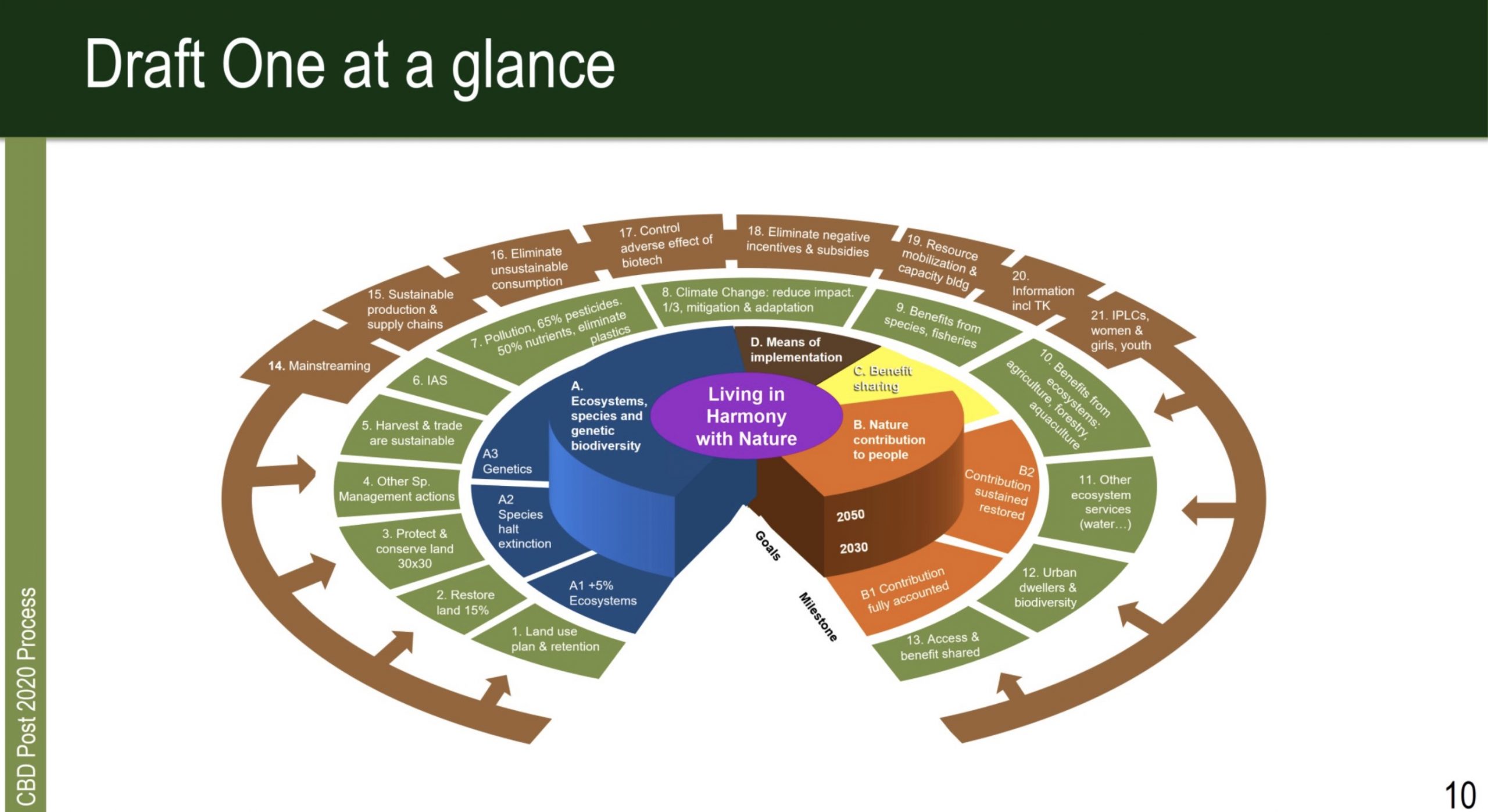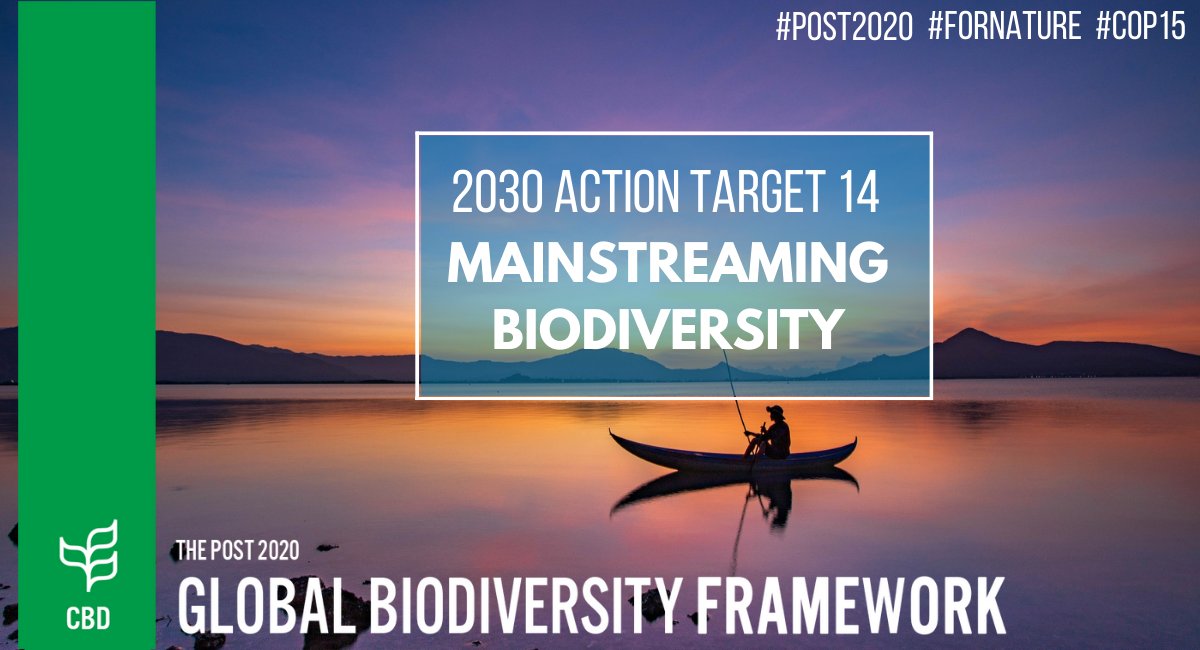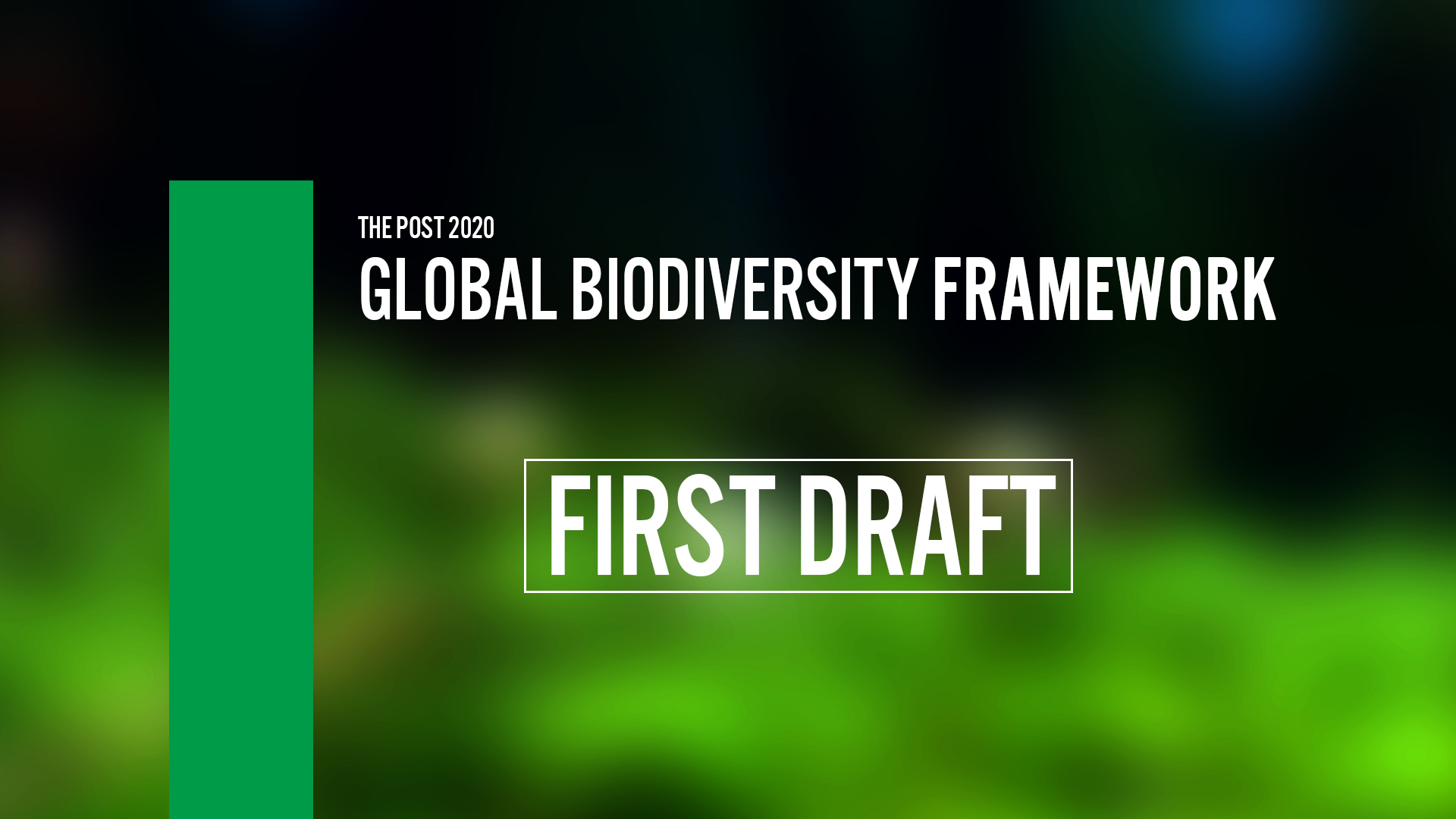The Secretariat of the UN Convention on Biological Diversity (CBD) has released the first draft of a new global biodiversity framework, to guide actions worldwide through 2030, to preserve and protect nature and its essential services to people.
Arriving following over two years of development, the draft framework will undergo further refinement during online negotiations in late summer 2021 before being presented for consideration at CBD’s next meeting of its 196 Parties at COP-15, in Kunming (China).
A new global framework for managing nature through 2030
The Framework comprises 21 targets and 10 ‘milestones’ proposed for 2030, en route to ‘living in harmony with nature’ by 2050. Key targets include:
- Ensure that at least 30 per cent globally of land areas and of sea areas, especially areas of particular importance for biodiversity and its contributions to people, are conserved through effectively and equitably managed, ecologically representative and well-connected systems of protected areas and other effective area based conservation measures, and integrated into the wider landscapes and seascapes.
- Prevent or reduce the rate of introduction and establishment of invasive alien species by50%,and control or eradicate such species to eliminate or reduce their impacts.
- Reduce nutrients lost to the environment by at least half, pesticides by at least two thirds, and eliminate discharge of plastic waste.
- Use ecosystem-based approaches to contribute to mitigation and adaptation to climate change, contributing at least 10 GtCO2e per year to mitigation; and ensure that all mitigation and adaptation efforts avoid negative impacts on biodiversity.
- Redirect, repurpose, reform or eliminate incentives harmful for biodiversity in a just and equitable way, reducing them by at least $500 billion per year.
- Increase financial resources from all sources to at least US$ 200 billion per year, including new, additional and effective financial resources, increasing by at least US$ 10 billion per year international financial flows to developing countries, leveraging private finance, and increasing domestic resource mobilization, taking into account national biodiversity finance planning.

What is the framework?
The post-2020 global biodiversity framework builds on the Strategic Plan for Biodiversity 2011-2020 and sets out an ambitious plan to implement broad-based action to bring about a transformation in society’s relationship with biodiversity, ensuring that by 2050 the shared vision of ‘living in harmony with nature’ is fulfilled.
The draft framework reflects input from the second meeting of a working group managing the development of the framework, as well as submissions received. The draft will be further updated in late summer with the benefit of input from the 24th meeting of the Subsidiary Body on Scientific, Technical and Technological Advice and the 3rd meeting of the Subsidiary Body in Implementation, as well as the advice from thematic consultations.
Theory of change





No Comments
Sorry, the comment form is closed at this time.